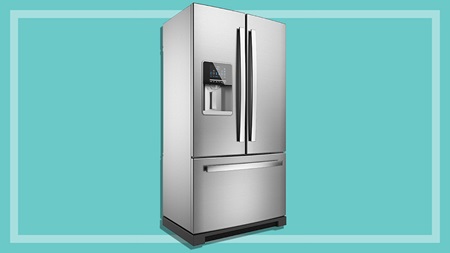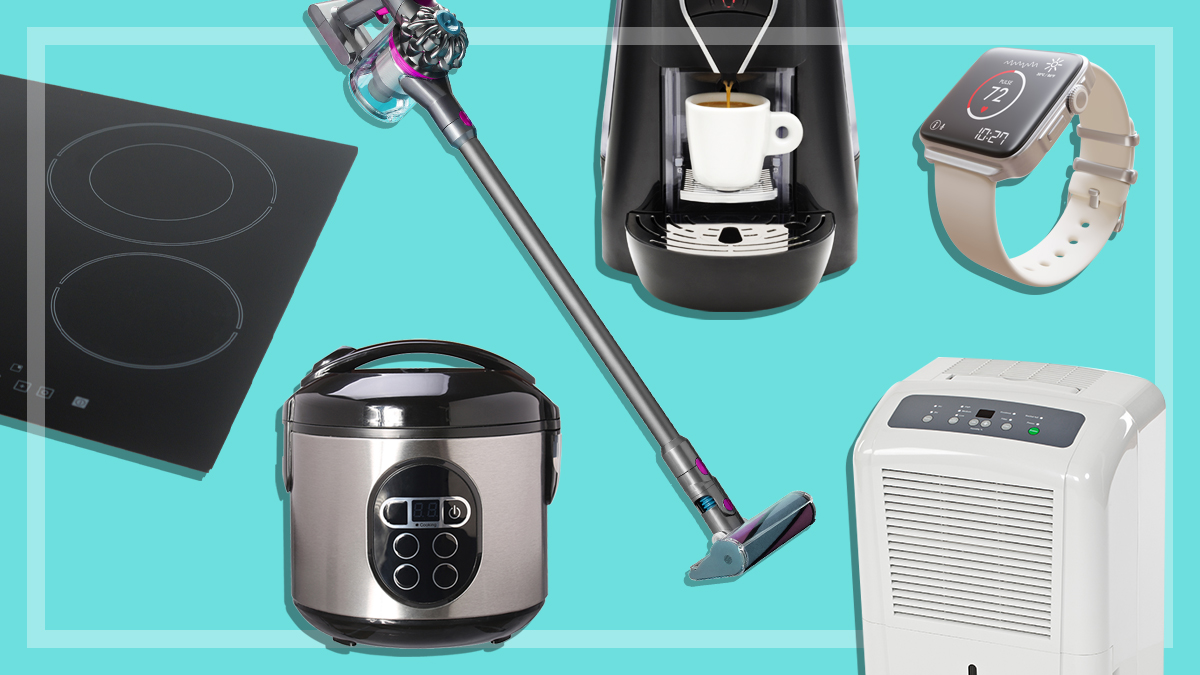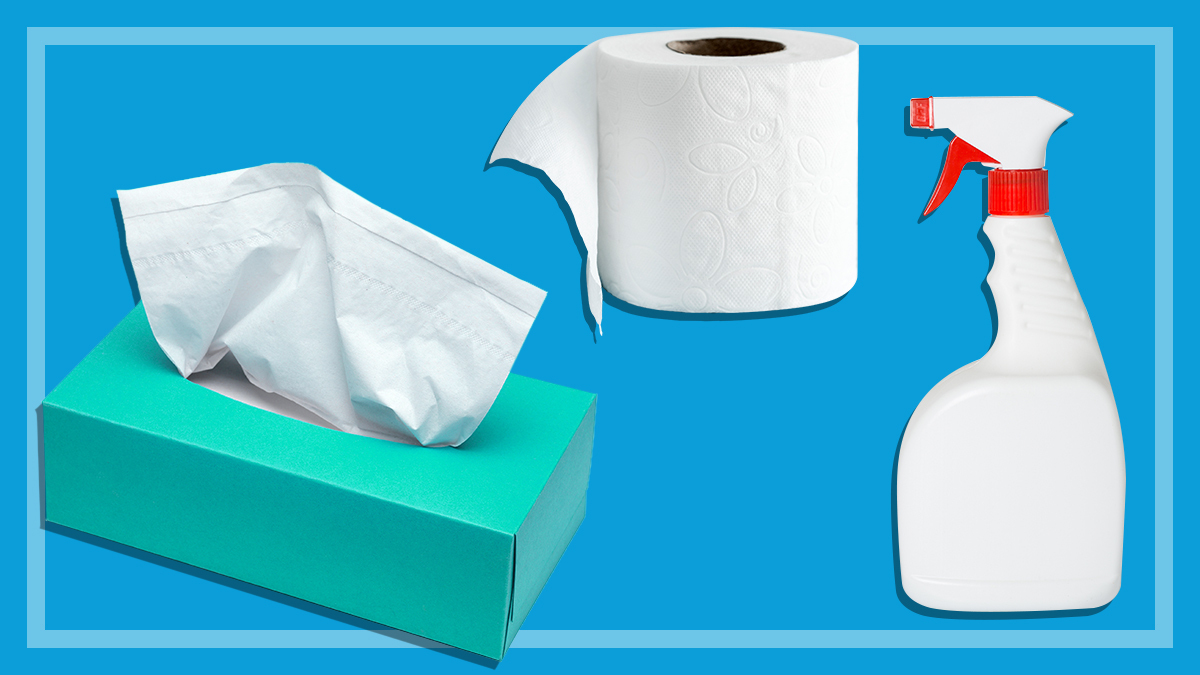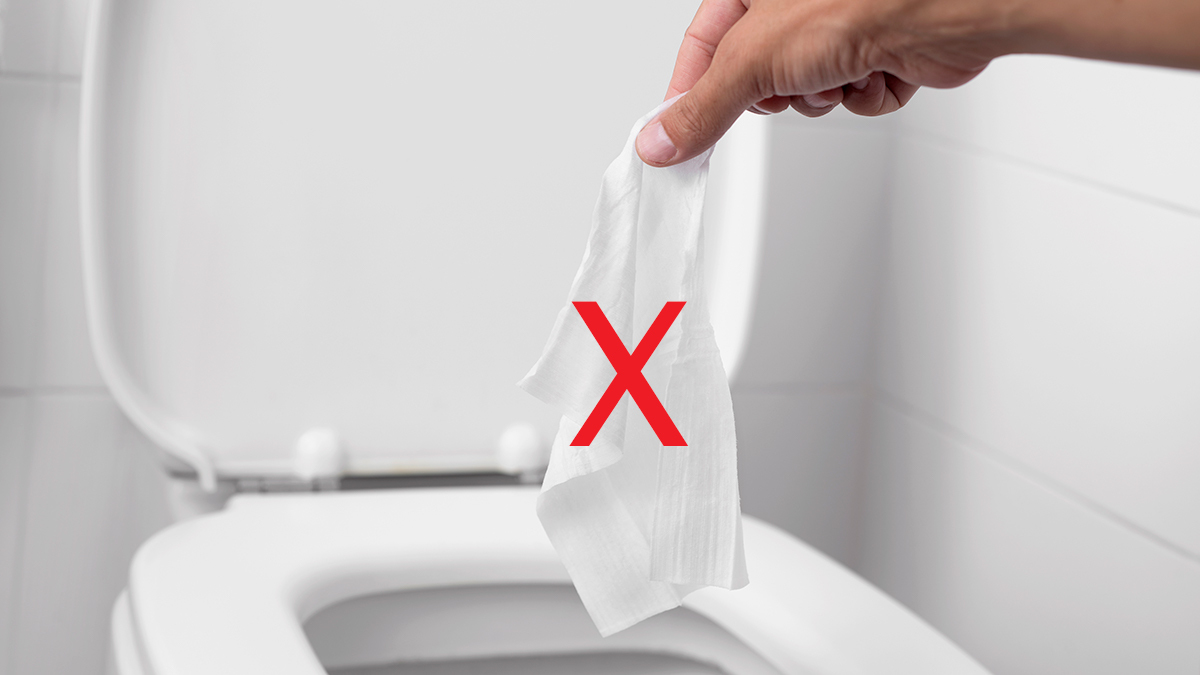Get our independent lab tests, expert reviews and honest advice.
5 easy appliance fixes you can do yourself
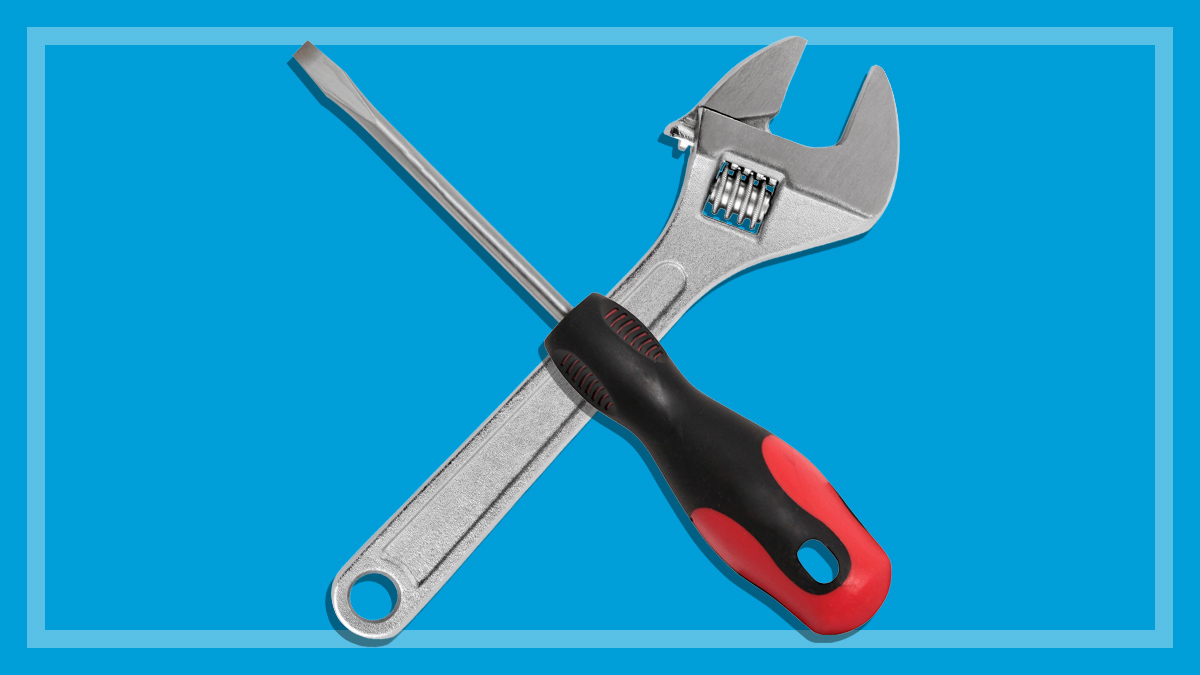
If the fridge is on the blink, your stick vac is stopping and starting, or your washing machine is giving (not) good vibrations, is your first instinct to call in a handyperson or would you reach for the tools yourself?
On this page:
- Repair or replace?
- 1. A leaking fridge
- 2. A flooding dishwasher
- 3. A stick vacuum cleaner that won't suck
- 4. A shaky or wobbly washing machine
- 5. Gas hobs that 'click' but won't light
When things go wrong with everyday household appliances, it’s easier if you can take matters into your own hands and fix it yourself. But sometimes, you’ll need to contact the manufacturer or call in a pro.
Stop! Is your appliance still under warranty?
Before you pick up the tools, check to see if your appliance is still under warranty or broken within a period that means you’re owed a fix under the Australian Consumer Law (ACL). In these cases, the manufacturer is probably responsible for making any necessary repairs or giving you another fix, such as a refund or replacement.
Some manufacturers claim that any work done on your appliances by an ‘unauthorised repairer’ may void your warranty
If you do decide to have a tinker yourself, be cautious. Some manufacturers claim that any work done on your appliances by an ‘unauthorised repairer’ may mean you void your warranty. (At CHOICE, we think this kind of restriction is unfair and we’re fighting to ban the practice).
In any case, under the ACL, you’re entitled to a refund, repair or replacement if a product develops a fault during a ‘reasonable amount of time after purchase’. All too often, businesses suggest that the ‘reasonable’ time period is the 12–24 month warranty period, but often it’s much longer.
We have a guide on the reasonable life expectancy for most appliances to help you work out if you should ask for a fix under the ACL.
Repair or replace?
If your appliance is broken and lasted longer than the warranty, or what you’re covered for under consumer law, it may be cheaper to replace rather than fix – although some people are willing to pay a bit more for repair if it means they can save the appliance from landfill.
It pays to look for local repair options, such as repair cafes (if the item is portable), which may be able to help you repair broken items yourself or fix problems for you. Of course, unless you can repair it, recycle it or return it to the manufacturer, landfill is the likeliest destination.
Not built to last
In an ideal world, we would have affordable products that last, with a repair process (with manufacturers or independent repairers) that is simple and fair. It would mean better quality products in our homes with a lower environmental impact.
Read more about what CHOICE is doing about the ‘right to repair’ issue.

Common appliance issues you can troubleshoot yourself
The good news is that your issue may be something you can easily fix yourself. If you have a problem that’s not listed here, try searching online for advice, check troubleshooting guides on the CHOICE website or in your owner’s manual, or use the manufacturer’s customer support services to see if other customers have had similar issues.
1. A leaking fridge
A budget to mid-range fridge should last at least six to nine years before you’d even consider replacing it instead of repairing it, but things can go wrong.
Spy a puddle of water under your fridge door? Check the back of the fridge to see if the defrost water tray is in the right position and that the drainage tube that leads to it is actually pointing at the drip tray.
A budget to mid-range fridge should last at least six to nine years before you’d even consider replacing it instead of repairing it
How do you know where to find this?
“Pull the fridge out and turn it around,” CHOICE appliance expert Ashley Iredale advises.
“For many fridges there will be an opening at the bottom where you can see the compressor and various pipes and bits and pieces, and that’s where you’ll find it.
“Some fridges have a completely solid, sealed back – if that’s the case, then break out the screwdrivers to remove the panel. If the back’s not removable, then you may well be out of luck.”
Water leaking inside the fridge
If water is leaking inside the fridge, it could mean there’s a blocked drain or outlet (or maybe you just have old leaky food in there).
There are drainage channels in some fridge cabinets, so check to see if there is a blockage of food or dirt and clear it. If drainage channels aren’t blocked, the leak could be from condensation, so check the door is closing properly, isn’t left open for too long, and that the seals are working well (they may need to be replaced). This can also happen during spells of high humidity.
Ashley says: “Replacing a door seal is a relatively simple operation, provided a replacement seal is available. Or failing that, you can bodge up a repair with silicone and baking paper.”
Here’s a list of other common fridge problems and how to fix them.
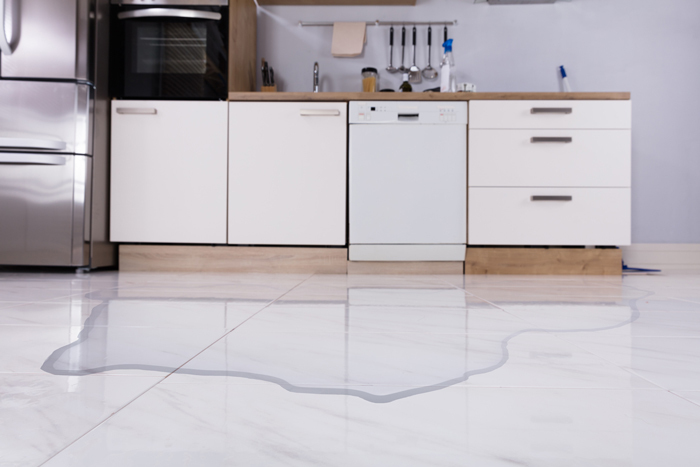
2. A flooding dishwasher
If there is water pooling in the bottom of your dishwasher after a wash, or on the floor outside the dishwasher, there are a few things that could be causing the problem.
Blockages and kinks
The filter and pump may be blocked with food debris, which means you just need to give it a good clean. You should also check the drainage hose for blockages, damage or kinks (over time, these can also become loose). If the drain hose is leaking or damaged, remove it and install a replacement hose.
“How complicated this job will be depends on how the drainage hose is attached, says Ashley.”It’s certainly worth attempting, and if it’s a simple screw fit or hose clamp, then it should be relatively simple. If it’s moulded into the inside of the machine, however, then you might need a professional.”
Not draining properly
Another reason could be that your dishwashing cycle was interrupted, so it didn’t drain properly. Try doing a restart (the old on-again, off-again trick works for appliances as well as computers!), or take a look at our instructions on how to drain a dishwasher. Here’s a list of other common issues with dishwashers and how to fix them.
How long should a dishwasher last?
You should expect your dishwasher to last about nine years, although some repairs and maintenance are to be expected within that time. If you have an issue you can’t fix yourself and it’s out of warranty, you may need to call a plumber or service technician to see if the issue is worth fixing – or if it’s time to get a new dishwasher.
3. A stick vacuum cleaner that won’t suck
When we ask Aussie consumers what their major problems with stick vacuums are, one in four (25.4%) say short battery life and one in 10 (10.8%) say not picking up dirt.
The good news is that there are a few fixes you can do yourself, which means you may be able to avoid getting a new one.
If you’re charging your stick vacuum for the recommended amount of time and it’s cutting out or not performing well, it may be a problem with the battery. Alternatively, you may just need to clean or replace the filter (or there may be something obstructing it).
If you’re having issues with your stick vacuum, first check the hose/wand for blockages, including the inlet on the cleaning head
Chris Barnes, CHOICE small appliance expert
CHOICE small appliance expert Chris Barnes says: “If you’re having issues with your stick vacuum, first check the hose/wand for blockages, including the inlet on the cleaning head and where the dust enters the bag/bin. Ensure you also keep the filters clean.”
Cleaning the filter
Dyson also suggests you clean your filter once a month to maintain efficiency of your stick vacuum (remove it, shake to remove any dust or debris, wash out with warm water and leave to dry before replacing). Check your manual or the manufacturer’s website for cleaning instructions specific to your model, or read our expert guide on how to clean your vacuum.
Replacing batteries
Batteries usually last three to four years and most models (apart from the cheapest ones) let you replace the batteries easily, usually just with a simple click and release. Unfortunately, the cost of replacing batteries, which could be about $100, means it may not be economical if your stick vac is on the cheap side.

4. A shaky or wobbly washing machine
All washing machines will usually vibrate a little during the cycle. But if your washer starts acting like it’s a bucking rodeo horse or causes damage to your floors, it needs attention.
Check the balance
First, ensure it’s level and not off-balance. Front loaders are more prone to vibration than top loaders. But most manufacturers agree that standing a front loader on a timber floor shouldn’t cause damage to the floor (due to the vibrations), as long as your floor is level and in good condition and your washing machine’s feet are adjusted properly, in good condition and stabilised.
Bad vibrations?
To stop excessive vibration, make sure you’re loading your washing machine evenly, alternating between small and large items, and don’t overload it (don’t wrap clothes around the agitator in a top loader). Don’t wash bed sheets and towels on their own – include smaller items in your load as well.
Another cause could be that your suspension springs or shock absorbers may be damaged and/or need to be replaced. But our experts suggest this is a job probably best left to a professional.
5. Gas hobs that ‘click’ but won’t light
If your gas hobs won’t ignite but the ignition switch is working (you’ll know because you can hear the ‘clicking’ sound), first check your gas supply.
If that all looks OK, your ignition/burner ports or nozzles may be out of alignment or clogged with food or debris, which is limiting the gas flow.
Turn off the gas, make sure the burners aren’t hot, then remove and clean the surface burners and ports according to the instructions in your manual (a toothbrush or a toothpick may be handy) and make sure they’re fully dry. Reinstall the burner, cover and grill.
If that doesn’t work, it may be a problem with your igniter or the ignition switch. Unless you’re a very confident DIYer, we’d strongly advise calling a professional for this.

